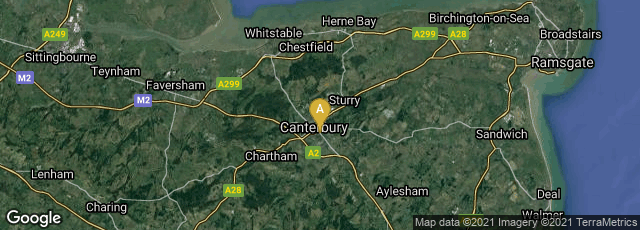

A: Canterbury, England, United Kingdom
The Stockholm Codex Aureus (also known as the "Codex Aureus of Canterbury") (National Library of Sweden, Kungliga biblioteket, Stockholm MS A. 135) was produced in the mid-eighth century in Southumbria, probably in Canterbury, England.
"The codex is richly decorated, with vellum leaves that alternately are dyed and undyed, the purple-dyed leaves written with gold, silver, and white pigment, the undyed ones with black ink and red pigment. The style is a blend of that of Insular art . . . and Continental art of the period.
"In the ninth century it was stolen by the Vikings and Aldormen Aelfred had to pay a ransom to get it back. Above and below the Latin text of the Gospel of St. Matthew is an added inscription in Old English recording how, a hundred years later, the manuscript was ransomed from a Viking army who had stolen it on one of their raids in Kent by Alfred, ealdorman of Surrey, and his wife Wærburh and given to Christ Church, Canterbury" (Wikipedia article on Stockholm Codex Aureus, accessed 06-25-2009).
The Old English inscription on folio 11 reads in translation:
+ In the name of our Lord Jesus Christ. I, Earl Alfred, and my wife Werburg procured this book from the heathen invading army with our own money; the purchase was made with pure gold. And we did that for the love of God and for the benefit of our souls, and because neither of us wanted these holy works to remain any longer in heathen hands. And now we wish to present them to Christ Church to God's praise and glory and honour, and as thanksgiving for his sufferings, and for the use of the religious community which glorifies God daily in Christ Church; in order that they should be read aloud every month for Alfred and for Werburg and for Alhthryth, for the eternal salvation of their souls, as long as God decrees that Christianity should survive in that place. And also I, Earl Alfred, and Werburg beg and entreat in the name of Almighty God and of all his saints that no man should be so presumptuous as to give away or remove these holy works from Christ Church as long as Christianity survives there.
Alfred
Werburg
Alhthryth their daughter
The manuscript remained at Canterbury until the 16th century when it travelled to Spain. In 1690 it was bought for the Swedish Royal Collection.